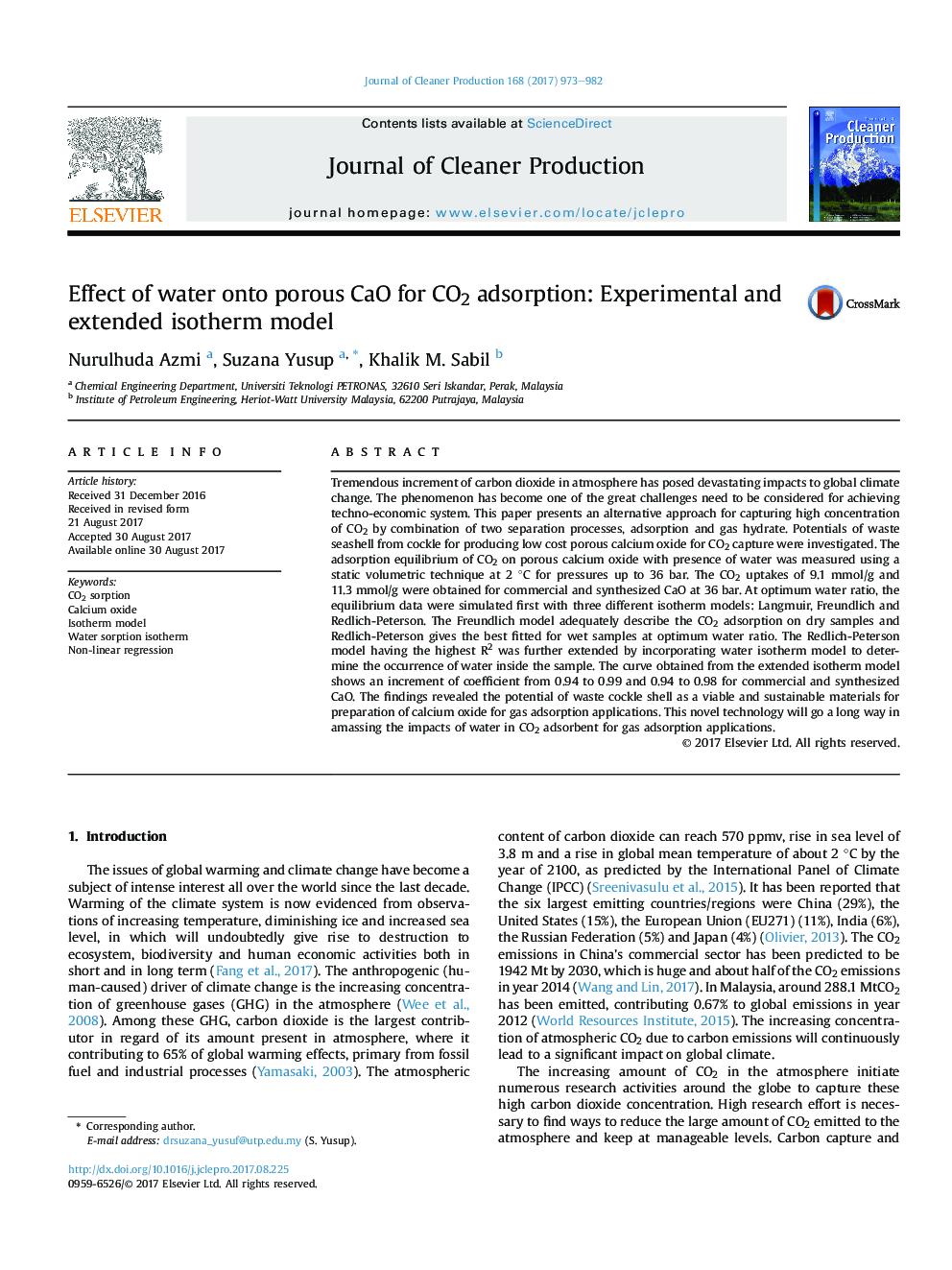| Article ID | Journal | Published Year | Pages | File Type |
|---|---|---|---|---|
| 5479862 | Journal of Cleaner Production | 2017 | 10 Pages |
â¢An alternative approach for capturing CO2 is proposed by combining gas adsorption and gas hydrate processes.â¢Potential of untreated cockle shell for producing low cost CaO for CO2 adsorption is investigated.â¢The CO2 uptake increases with presence an adequate amount of water on porous CaO.â¢Water isotherm model is added to existing isotherm model for the case of presence of water.
Tremendous increment of carbon dioxide in atmosphere has posed devastating impacts to global climate change. The phenomenon has become one of the great challenges need to be considered for achieving techno-economic system. This paper presents an alternative approach for capturing high concentration of CO2 by combination of two separation processes, adsorption and gas hydrate. Potentials of waste seashell from cockle for producing low cost porous calcium oxide for CO2 capture were investigated. The adsorption equilibrium of CO2 on porous calcium oxide with presence of water was measured using a static volumetric technique at 2 °C for pressures up to 36 bar. The CO2 uptakes of 9.1 mmol/g and 11.3 mmol/g were obtained for commercial and synthesized CaO at 36 bar. At optimum water ratio, the equilibrium data were simulated first with three different isotherm models: Langmuir, Freundlich and Redlich-Peterson. The Freundlich model adequately describe the CO2 adsorption on dry samples and Redlich-Peterson gives the best fitted for wet samples at optimum water ratio. The Redlich-Peterson model having the highest R2 was further extended by incorporating water isotherm model to determine the occurrence of water inside the sample. The curve obtained from the extended isotherm model shows an increment of coefficient from 0.94 to 0.99 and 0.94 to 0.98 for commercial and synthesized CaO. The findings revealed the potential of waste cockle shell as a viable and sustainable materials for preparation of calcium oxide for gas adsorption applications. This novel technology will go a long way in amassing the impacts of water in CO2 adsorbent for gas adsorption applications.
